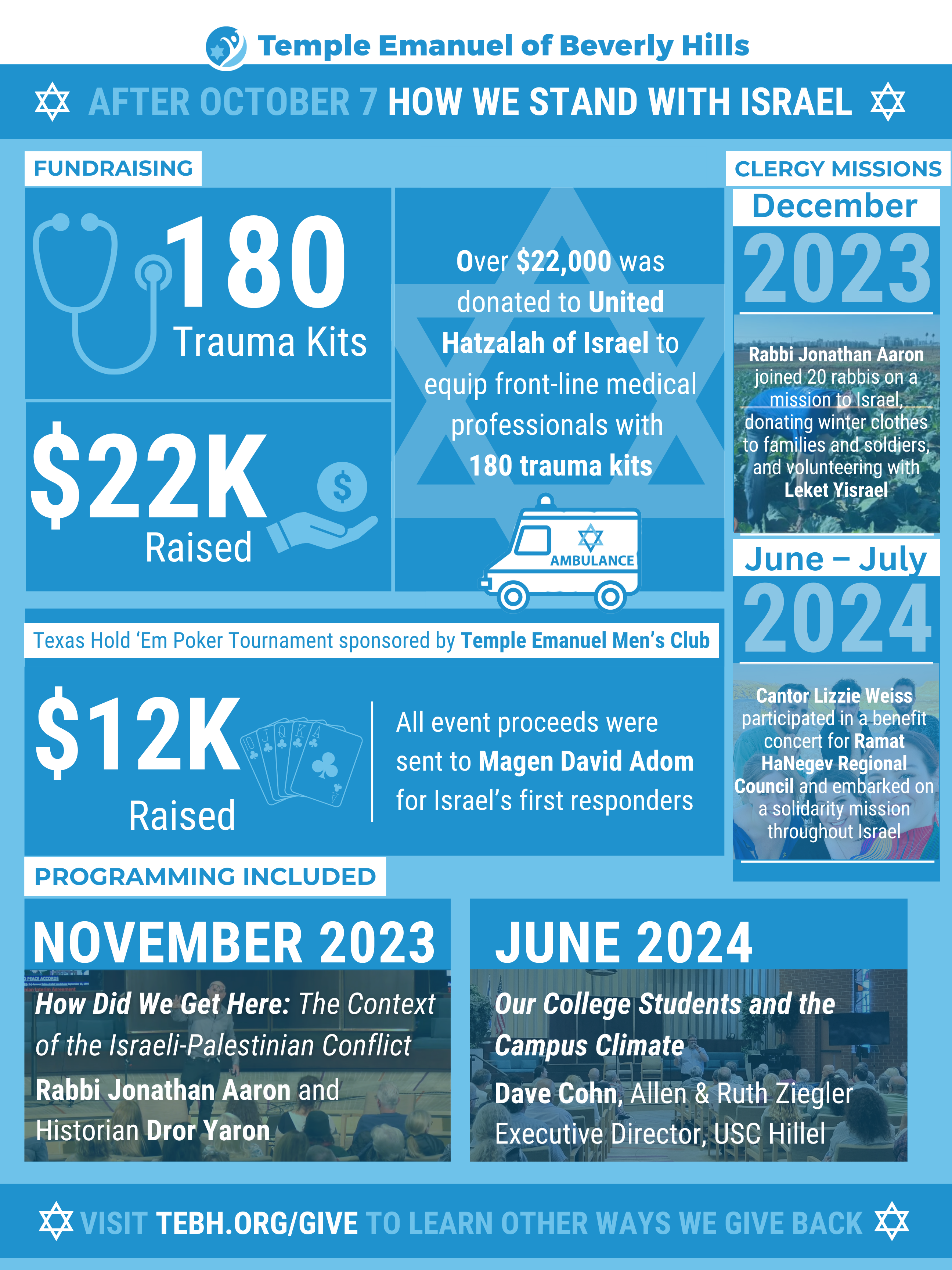
As part of our enduring commitment to the nation and people of Israel, Cantor Lizzie Weiss traveled to the Ramat HaNegev Regional Council in the summer of 2024. Her journey included a benefit concert and solidarity mission to aid the region, which has provided refuge for thousands of displaced Israelis since the October 7 attack. To learn more about the region’s humanitarian efforts and Cantor Weiss’ travels, please visit our blog. If you would like to support Ramat HaNegev, kindly consider donating to Cantor Weiss’ discretionary fund at tebh.org/give (please specify “Israel” in the description of your donation form).

Our hearts are with the people of Israel during this dark time.
There are multiple avenues to provide assistance to the Israeli victims of terror. You can explore the links below to donate to organizations dedicated to aiding those afflicted by the ongoing violence.

